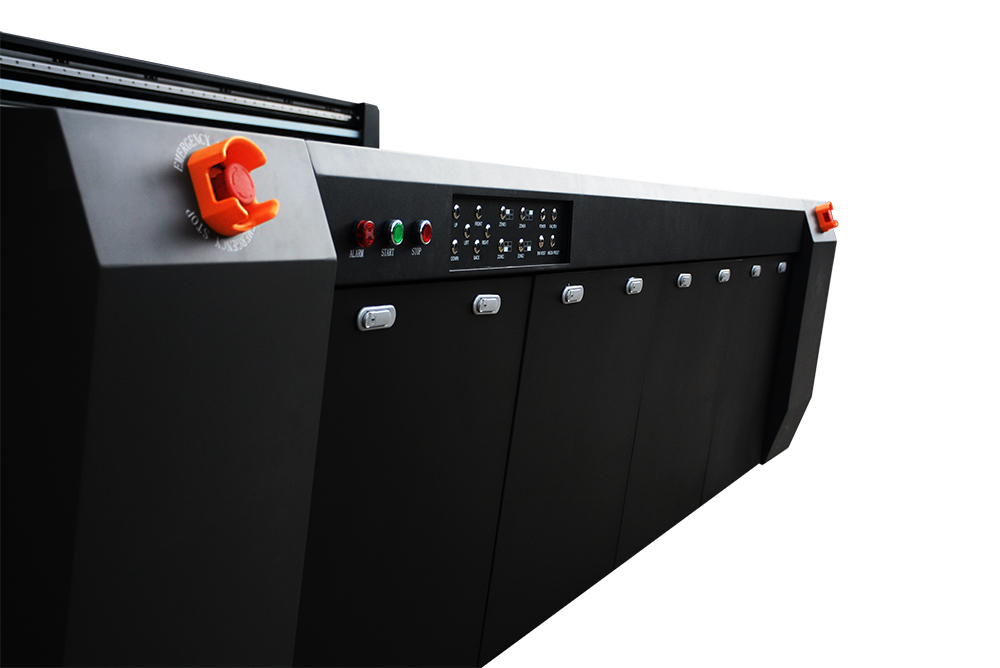What Are the Environmental Considerations for UV Flatbed Printers
Welcome to our exploration of UV flatbed printers and their environmental impact! If you’re in the printing industry or simply curious about sustainable technology, understanding how these machines interact with the environment is crucial. UV flatbed printers are renowned for their versatility and high-quality output, but they also come with specific environmental considerations. Let’s delve into what makes these printers unique and how you can make eco-friendly choices in your printing endeavors.

The Technology Behind UV Flatbed Printing
Before diving into environmental aspects, let’s take a quick look at how UV flatbed printers work. These printers use ultraviolet light to cure or dry ink immediately after it’s applied to a substrate. This technology allows for printing on a wide range of materials, including plastics, metals, glass, and wood, making it a popular choice for signage, displays, and promotional items. The instant curing process means faster production times and reduced risk of smudging or smearing, but what does this mean for the environment?
Energy Consumption: A Key Environmental Factor
One of the primary environmental considerations for UV flatbed printers is their energy usage. Since these printers rely on UV lamps to cure the ink, they consume a significant amount of electricity. High-intensity UV lamps, especially those used in industrial-grade printers, can be energy-hungry. However, advancements in technology have led to the development of more energy-efficient UV lamps, such as LED-UV systems, which consume less power and have a longer lifespan. When considering a UV flatbed printer, look for models with energy-saving features to minimize your carbon footprint.
Ink Types and Their Environmental Impact
The choice of ink can also have a substantial impact on the environment. Traditional UV inks often contain volatile organic compounds (VOCs), which can be harmful to both human health and the environment. VOCs contribute to air pollution and can cause respiratory issues when inhaled. Fortunately, many manufacturers now offer low-VOC or VOC-free UV inks, which are safer alternatives. These eco-friendly inks not only reduce environmental harm but also improve indoor air quality in printing facilities. Additionally, some inks are designed to be more biodegradable, further reducing their environmental impact.
Waste Management and Recycling
Printing processes generate waste, and UV flatbed printing is no exception. From empty ink cartridges to used substrates, proper waste management is essential. Recycling ink cartridges and substrates can significantly reduce the amount of waste sent to landfills. Many manufacturers offer recycling programs for their products, making it easier for you to dispose of waste responsibly. Additionally, consider using recyclable or biodegradable substrates to minimize your environmental impact. Some substrates, like certain types of plastics, can be difficult to recycle, so opting for more sustainable options can make a big difference.
UV Lamp Maintenance and Disposal
UV lamps are a critical component of UV flatbed printers, but they also require proper maintenance and disposal. Over time, UV lamps can degrade, reducing their effectiveness and potentially emitting harmful substances. Regular maintenance, such as cleaning and replacing lamps as needed, can extend their lifespan and ensure optimal performance. When it’s time to replace a UV lamp, it’s important to dispose of it properly. Many lamps contain mercury, a toxic substance that can be harmful if not handled correctly. Look for local recycling facilities that accept mercury-containing lamps and follow their guidelines for safe disposal.
Noise Pollution and Work Environment
While not as commonly discussed as other environmental factors, noise pollution is an important consideration, especially in shared workspaces or residential areas. UV flatbed printers can be noisy, particularly during high-speed printing operations. Prolonged exposure to loud noise can lead to hearing loss and other health issues. To mitigate noise pollution, consider installing soundproofing materials in your printing area or choosing a printer with noise-reducing features. Additionally, scheduling printing tasks during off-peak hours can help minimize disruptions to your work environment.
The Future of UV Flatbed Printing: Sustainability Innovations
As technology advances, so do the opportunities for more sustainable UV flatbed printing solutions. Manufacturers are constantly exploring new ways to reduce energy consumption, minimize waste, and create eco-friendly inks. For example, some printers now use water-based UV inks, which are even safer for the environment than traditional low-VOC inks. Additionally, advancements in UV lamp technology are leading to more efficient and longer-lasting lamps, further reducing energy usage and waste. By staying informed about these innovations, you can make more sustainable choices for your printing needs.
Conclusion
In conclusion, UV flatbed printers offer a versatile and high-quality printing solution, but they also come with specific environmental considerations. From energy consumption and ink types to waste management and noise pollution, there are many factors to consider when choosing and operating a UV flatbed printer. By making informed decisions, such as selecting energy-efficient models, using eco-friendly inks, and practicing proper waste management, you can minimize your environmental impact and contribute to a more sustainable future. As technology continues to evolve, we can expect even more innovative solutions that will further reduce the environmental footprint of UV flatbed printing. So, the next time you’re in the market for a printer, remember to consider these environmental factors and make a choice that aligns with your values and the planet’s well-being.
